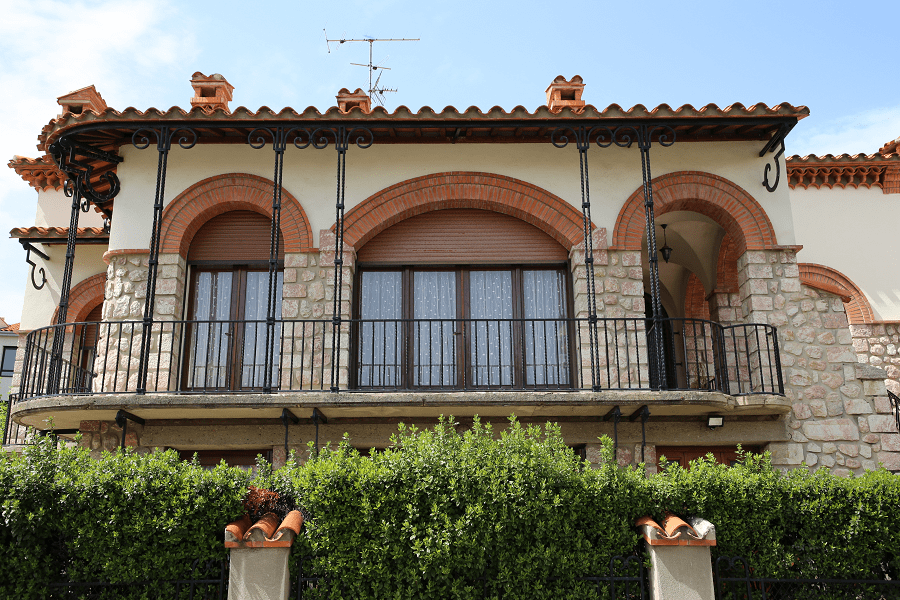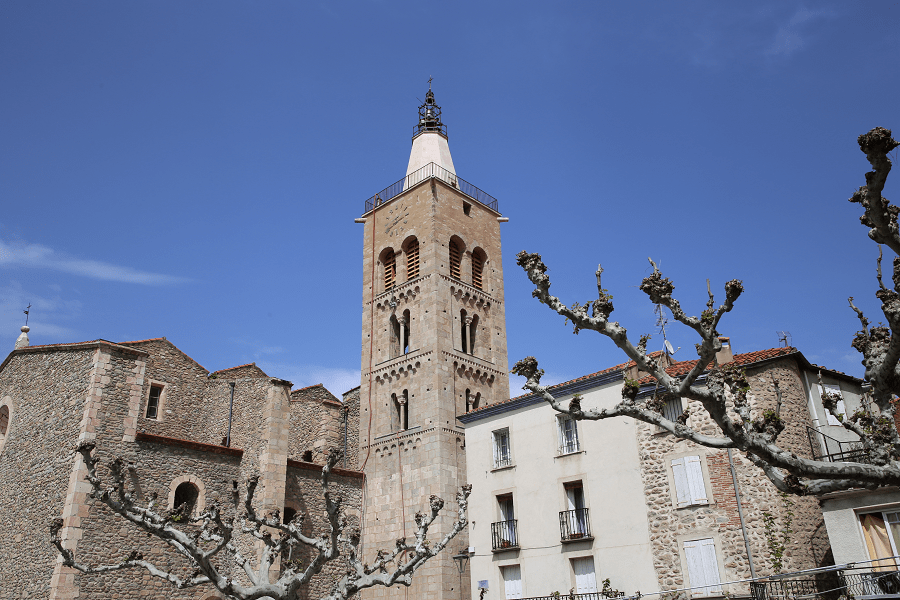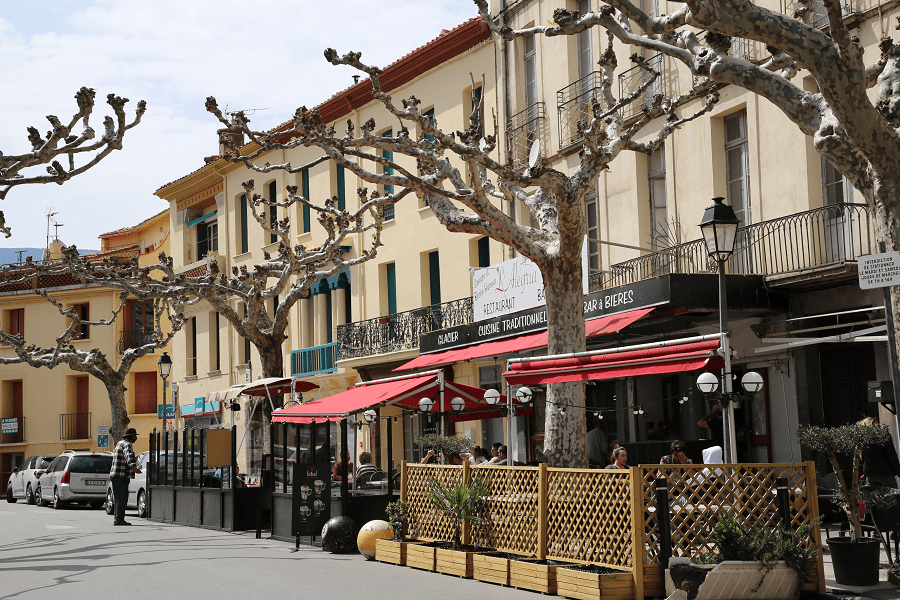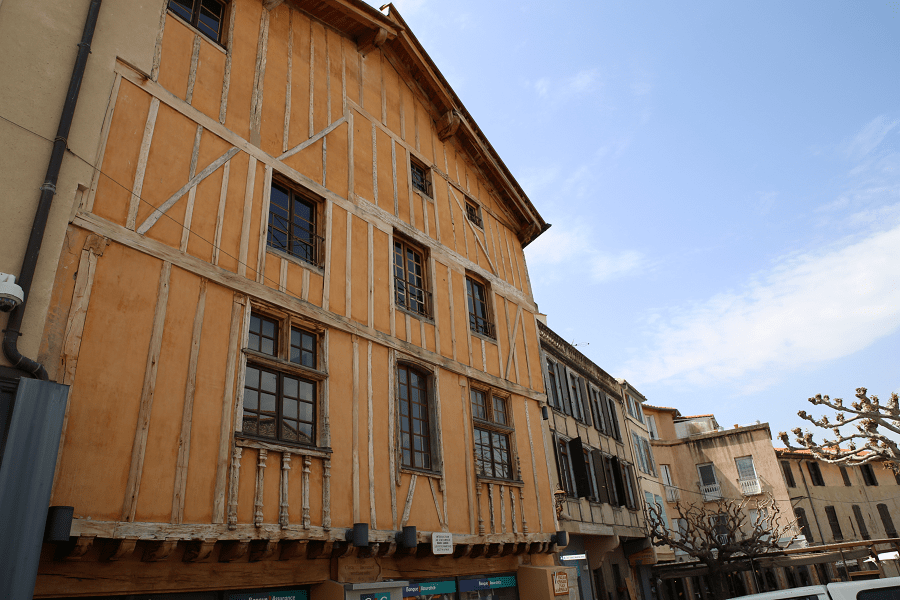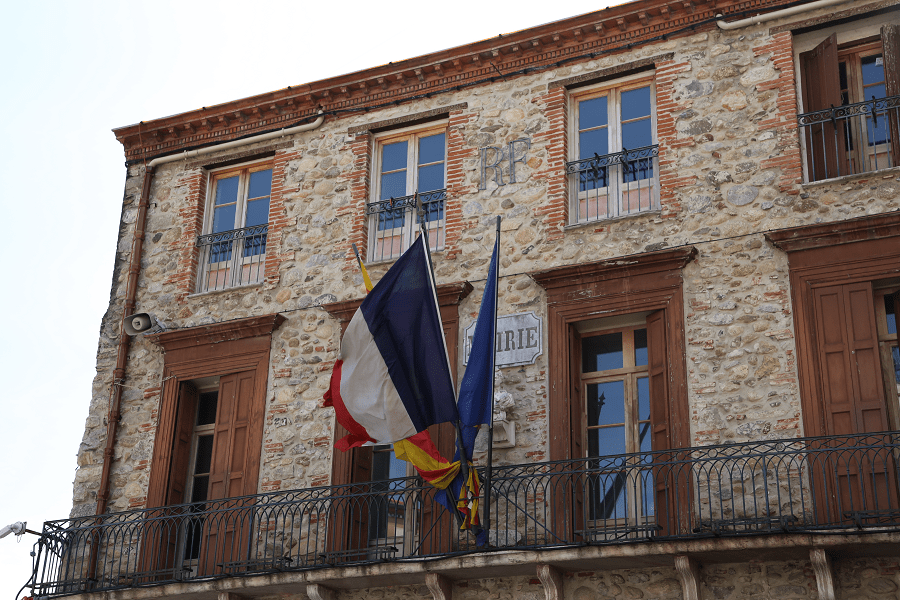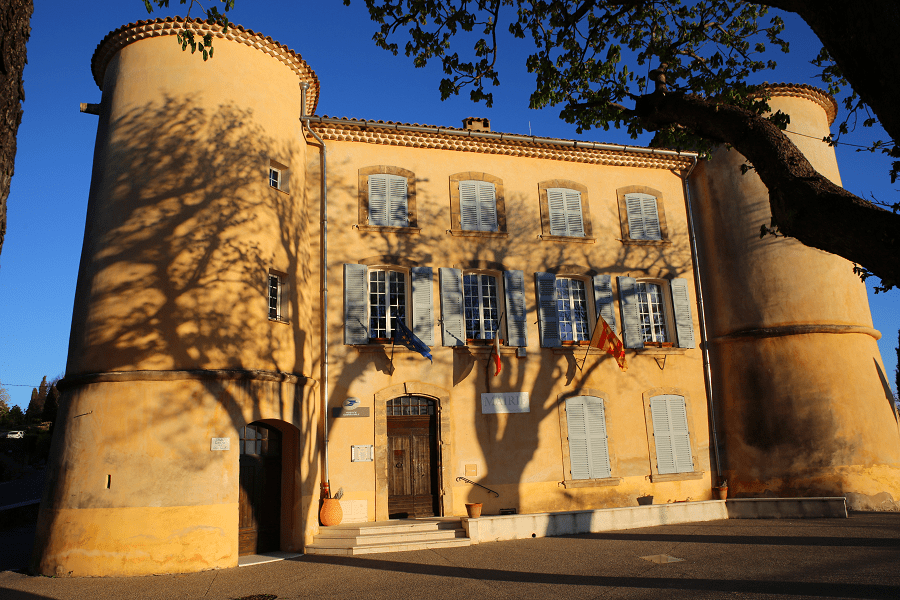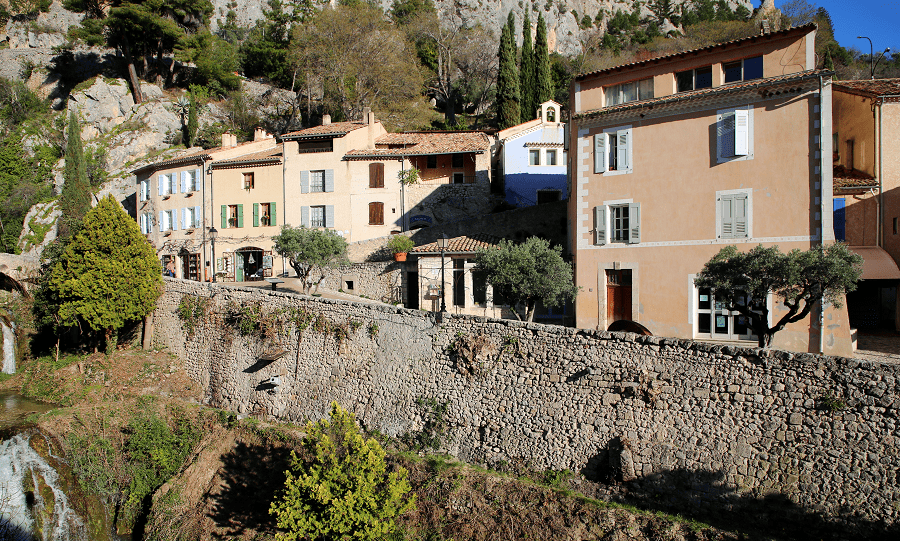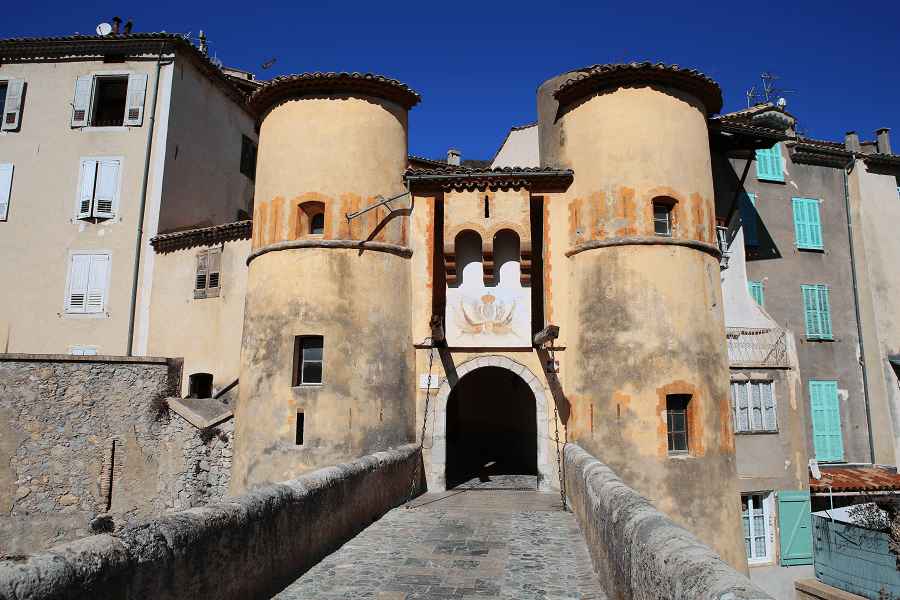Prades is a commune in the south of France, sub-prefecture and cantonal capital of the Pyrénées-Orientales department, in the Occitania region, this ancient fortified city founded in the 9th century, is today the main town in the west of the department.
It is also the capital of the historic Catalan comarca, Conflent. It is located at an altitude of 940 m among dense forests.
The town is rich in monuments and many houses on the central streets have stylish facades. The town has preserved buildings that used to be laundries which is a clear sign of the town’s prosperity in the past.
Prades is located at the foot of the Canigou Massif, to the west of Perpignan.
Economy
The town’s main economic base is from mountain tourism. There are many routes of varying difficulty near the town for hiking enthusiasts.
The traditional source of income for the town is agriculture. Prades potatoes are famous across the whole of the Pyrenees. One can relate the high quality of this vegetable to the climatic conditions. Harvesting only takes place in September, and the potatoes’ taste becomes better.
History
Prades does not seem to have existed in the prehistoric period. However, we know that distant ancestors lived on the hills of Conflent which was an ideal settlement for them because of its mild climate.
The history of Prades dates back to the Roman Empire. This is confirmed by Roman coins found during archaeological excavations. If the Romans lived here, then there is no evidence that they participated in the town’s construction. Vandales and then the Visigoths captured Roussillon after the Roman Empire’s fall, but neither one nor the other left visible traces.
The Carolingienne period began in 811, after the Pyrenees conquest and the Charlemagne invasion.
St. Pierre de Prades church (l’église St Pierre de Prades) was built in the 9th century. The church’s construction marked the true beginning of the town’s history.
The first important event in Prades’ history took place in 843; Sunifred, Earl of Roussillon, and his wife Ermessinde, transferred the church to Abbot Andedatus, Grasse Abbey (l’abbaye de La Grasse), in Languedoc. This abbey received not only the church but also the land.
They rebuilt St. Pierre church in the Romanesque style in the middle of the 12th century and endowed it with a spire 30 m high. The church is a historical monument of baroque architecture. There are relics stored inside, objects made of precious metals, and a statue of Our Lady of Notre-Dame-de-la-Volta (14th century).
Conflent came under the control of the King of Mallorca, Jacques II of Aragon (Jacques II d’Aragon) in 1276, which gave Prades many new advantages and the town inhabitants worshiped the king’s benefactors for a long time.
However, unfortunately for the city, in 1344 the kingdom of Mallorca was transferred to Pierre IV d’Aragon. The third and last king of Mallorca, Jacques II, fled to France. It was not for long. Jacques II, at the head of a new army, invaded Roussillon, then Conflent and Cerdagne in 1347. Prades greeted him with open arms but a few days later Pierre IV of Aragon captured the town again.
They established a hospital in Prades in 1350.
A consulate started to function in the town in 1423; a little later than in other towns in the region. The region acquired the right to justice only at the end of the 16th century.
A document from May 31, 1581, speaks of an important event for the city: it was decided that an elevated storage facility for grain would be built.
Conflent’s headquarters moved from Villefranche to Prades in 1773.
They built the main historical building of Prades, the city hall, in 1850.
People call it “the Red Town” today because of the stone’s color; they used this stone to build most of the town’s houses.
The Town’s Main Cultural Events
Prades Chamber Music Festival took place for the first time in 1950 in honor of Johann Sebastian Bach’s death. The project’s director is Pablo Casals (a Catalan cellist, conductor, composer, musician and public figure). Columbia Records have been issuing the musicians’ records since the first year of the festival.
The festival moved to Perpignan in 1951 but a year later returned to Prades. The festival has received a new name since 1982; it is now called Pablo Casals festival.
The festival takes place each summer in various places in the Eastern Pyrenees, including Saint-Pierre de Prades church, Saint-Michel de Cuxa abbey, Saint-Martin-du-Canigu abbey, and Cornellà de Conflent church.
You can visit the Pablo Casals Museum to learn more about the great Catalan musician. The museum exhibits his whole life in the form of letters, photographs, musical instruments, musical recordings and concert clothes.
Catalonia Summer University (Universitat Catalana d’Estiu)
The Summer Catalonia University has been taking place in Prades every summer since 1986. This is an academic event involving scientists and artists which usually lasts ten days. Attendance is free.
Shopping
Prades is rather interesting to visit for those who love local delicacies. A market is held in the town’s central square every Saturday morning.
How to get to?
Shortest distances by car from the nearest French cities:
From Paris (tolls): 8 hr 38 min (888 km) via A71 and A75
From Biarritz (tolls): 5 h 6 min (547 km) via A64
From Dax (tolls): 4 h 57 min (514 km) via A64 and A61
From Nantes (tolls): 7 h 44 min (828 km) via A62
From Saumur (tolls): 7 h 45 min (786 km) via A62
From Bordeaux (tolls): 4 h 40 min (488 km) via A62 and A61
From La Rochelle (tolls): 6 h 14 min (665 km) via A62
From Toulouse: 2 h 31 min (245 km) via A61
From Carcassonne: 1 h 41 min (155 km) via A61 and A9
From Nice (tolls): 5 h 3 min (515 km) via A8 and A9
From Marseille (tolls): 3 h 29 min (358 km) via A9
From Avignon (tolls): 2 h 51 min (284 km) via A9
From Montpellier (tolls): 2 h 8 min (194 km) via A9
From Béziers (tolls): 1 h 30 min (134 km) via A9
From Perpignan: 37 min (45.0 km) via N116 and N116
From Narbonne (tolls): 1 h 13 min (105 km) via A9
Shortest distances by car from the European cities:
From Monaco (tolls): 5 h 14 min (536 km) via A8 and A9
From Andorra (tolls): 2 h 16 min (116 km) via N116
From Barcelona: 2 hr 35 min (230 km) via AP-7
From Madrid: 7 hr 59 min (725 km) via A-2
From Moscow: 37 hr (3,462 km) via E30/M1
From Belgrade: 18 hr 49 min (1,843 km) via E70
From Istanbul: 29 hr (2,790 km) via E70
From Bern: 7 hr 39 min (795 km) via A9
Main information
Area: 10.9 sq. km
Population: 6 509 (2019)
Coordinates: 42°37′05″N 2°25′22″E
Languages: French, Catalan
Currency: euro
Visa: Schengen
Time: Central-European UTC +1
See here Pyrenees travel guide
See here France travel guide
See here Spain travel guide




